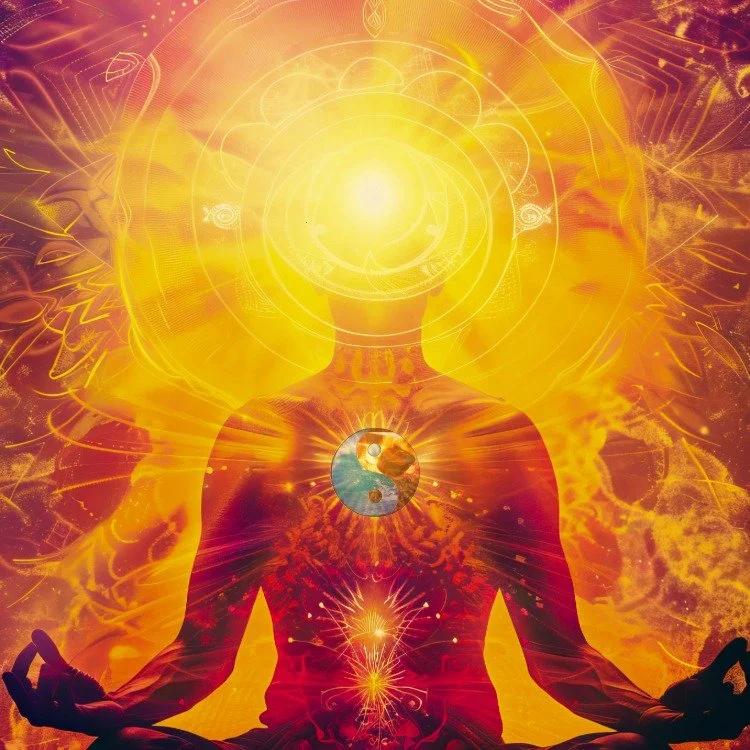Decoding Energy Healing: Ayurveda & Traditional Chinese Medicine
Let’s talk energy. Not the kind that comes from coffee or a good night’s sleep, but the subtle, vital force that animates everything in your body, mind, and spirit. In both Ayurveda and Traditional Chinese Medicine (TCM), this energy is central to health and healing. While these two ancient systems come from different parts of the world, India and China, they share a surprisingly similar philosophy: when energy flows freely, we thrive. When it’s blocked or imbalanced, we suffer.
So how do these systems understand energy? And how can we use their wisdom to feel more balanced, vibrant, and alive? Let’s break it down.
Two Languages, One Truth
In Ayurveda, this life force is called Prana. In TCM, it’s known as Qi (pronounced “chee”). Different names, same idea: it’s the invisible current that powers your body, your thoughts, your emotions.
Both systems map this energy through channels, Nadis in Ayurveda and Meridians in TCM. They also recognize energy centers: Chakras in Ayurveda, and key organ systems in TCM that correspond to emotional and physical states.
And here’s the cool part: both traditions believe that healing happens when we restore the natural flow of this energy.
Understanding Your Energetic Blueprint
Ayurveda uses the concept of Doshas,Vata, Pitta, and Kapha. These are combinations of the five elements (earth, water, fire, air, ether) and they shape your physical and mental tendencies.
TCM, on the other hand, talks about Yin and Yang, and the Five Elements, Wood, Fire, Earth, Metal, and Water. These elements also relate to organs, emotions, and seasons.
Even though the frameworks are different, they’re both trying to answer the same question: What’s your unique energy pattern, and how can you keep it in balance?
How Energy Healing Works in Both Systems
Let’s look at how each system approaches healing based on your energetic tendencies:
If You’re Feeling Scattered or Anxious…
Ayurveda would say your Vata is out of balance. TCM might call it Qi deficiency or Yin depletion.
What helps:
Grounding practices like warm oil massage (Abhyanga)
Gentle movement like Qi Gong or Tai Chi
Herbal support: Ashwagandha (Ayurveda) or Ginseng (TCM)
Visualization of roots, earth, and stability
Practice: “I am rooted, nourished, and whole.”
If You’re Overheated or Irritable…
Ayurveda sees this as excess Pitta. TCM might say you have too much Yang or Liver Qi stagnation.
What helps:
Cooling breathwork and calming herbs like Brahmi or Shatavari
Acupuncture or acupressure on Liver and Heart meridians
Water imagery, moonlight meditations, Yin Yoga
Practice: “I release the fire and flow with ease.”
If You’re Feeling Heavy or Stuck…
Ayurveda would point to excess Kapha. TCM might call it Qi stagnation or dampness.
What helps:
Stimulating breathwork like Kapalabhati
Cupping or moxibustion to move stagnant Qi
Uplifting movement: walking meditation, dance, chanting
Herbs like Trikatu or citrus peels
Practice: “I am vibrant, clear, and alive.”
Here’s the beauty of these systems: you don’t have to choose one. You can blend them. Use Ayurvedic herbs with TCM acupressure. Pair chakra meditation with meridian stretching. The goal is the same, balance your energy, honor your nature, and support your healing.
Some universal tips:
Align with nature: follow the seasons, rise with the sun, rest with the moon.
Set intentions: healing begins with awareness.
Be consistent: small daily practices create big shifts.
Trust your body: it knows what it needs—listen.
Final Thoughts
Ayurveda and TCM are like two wise elders speaking different languages but telling the same story: You are energy. You are rhythm. You are healing waiting to happen. So whether you’re sipping herbal tea, doing breathwork, or pressing a point on your wrist, know that you’re tapping into thousands of years of wisdom.
Let your energy be your compass. Let your practices be your medicine.
